Mangalorean Crab Sukka is a coastal delicacy from Mangalore, Karnataka that combines the bold flavors of spices, tamarind, and coconut to create a dry, aromatic dish. A true gem for seafood lovers, this dish holds a special place in my heart as it’s my mother’s recipe—a family favorite that brings back memories of warm gatherings and hearty meals. Perfect with steamed rice, and neer dosa, this crab sukka will impress anyone at your table.

What Does Sukka Mean in Mangalorean and Indian Coastal Cuisine?
In Mangalorean cuisine, “sukka” refers to a dry dish where the main ingredient is cooked with a blend of spices, often with grated coconut to add richness and texture. The word “sukka” itself translates to “dry” in Hindi and many Indian languages, signifying a dish where the masala coats the main ingredient without much liquid.
In Indian coastal cuisine, sukka dishes are common and reflect the vibrant use of locally available ingredients like coconut, tamarind, and fresh seafood. Each region has its twist on sukka: Mangalorean versions are heavily coconut-based and typically include tamarind for tanginess, while Goan versions might incorporate vinegar or kokum for a distinctive sourness. In the Malabar coastal regions, tamarind or Malabar tamarind (jarige pulli) is often used to add a unique tartness, while keeping the dish dry and flavorful. Mangalorean Sukka dishes, such as this Crab Sukka or the iconic Chicken Sukka, stand out for their earthy, spicy flavor balanced by the sweetness of grated coconut.
Why Seafood Dishes Use More Spices and Tamarind
Seafood, especially crab, has a distinct aroma and flavor that often requires a balance of bold spices and tangy ingredients. This is why traditional Mangalorean recipes for crab and fish dishes call for more pepper, byadgi chilies, and tamarind than chicken-based recipes. Tamarind adds a tang that complements the natural sweetness of seafood, while the spices counteract the “fishy” notes. In some variations, tomatoes are used as an alternative to tamarind or jarige pulli (Malabar tamarind) to achieve the desired tanginess.
Ingredients for Mangalorean Crab Sukka
- For the Masala Paste
- 1 tsp coconut oil or neutral oil
- 2 tsp coriander seeds
- 1 tsp cumin seeds
- ½ tsp ajwain (carom seeds)
- ¼ tsp methi seeds (fenugreek)
- ½ tsp whole peppercorns
- 1 tsp mustard seeds
- 1 sprig curry leaves
- 10-12 byadgi chilies
- 1-inch ginger
- 5-6 cloves garlic
- 1 lime-sized ball of tamarind
- 1 medium onion
- For the Coconut Mixture
- ¾-1 cup grated coconut
- 2 tsp turmeric powder
- For the Crab Sukka
- 1-2 tbsp coconut oil or neutral oil
- 2 medium onions, finely chopped
- 1 sprig curry leaves
- 1 kg cleaned crabs, washed with salt and turmeric
- 2-3 tbsp jarige pulli water or tamarind water
- Coriander leaves for garnish
Instructions
Cleaning and Prepping Crabs
Wash the crabs thoroughly. Add salt and turmeric powder to the crabs and let them sit for 15-20 minutes. This step helps reduce any strong fishy smell. Before cooking, rinse the crabs well under cold water to remove the salt and turmeric. Set aside.
Prepare the Masala Paste
Heat 1 tsp oil in a pan and roast coriander seeds, cumin seeds, ajwain, methi seeds, peppercorns, mustard seeds, curry leaves, and byadgi chilies until aromatic. Transfer to a mixer jar along with ginger, garlic, tamarind, and onion. Grind into a fine, thick paste with a little water.
Toast the Coconut
In the same pan, dry roast the grated coconut with turmeric powder until golden and aromatic. Set aside.
Cook the Crab Sukka
Heat 1-2 tbsp oil in a heavy-bottomed vessel. Add curry leaves and finely chopped onions, cooking until browned. Add the crabs to the pan along with 2-3 tsp water. Cover and cook on low heat for 3-4 minutes. Stir in the prepared masala paste and jarige pulli water. Some families add tomatoes instead of jarige pulli for a slightly different tang. Mix well, adding water if needed to prevent burning. Cover and cook for another 2-3 minutes. Once the water has evaporated and the masala clings to the crabs, add the toasted coconut. Cook until the dish is dry but still moist. Garnish with coriander leaves and serve hot.
Key Tips for Perfect Crab Sukka
How to Tell if Crab is Cooked
An easy way to know if crab is fully cooked is to look at the shell—it will turn a vibrant orange color when ready.
How to Remove the Fishy Smell
As per my mom’s foolproof method, washing the crabs with salt and turmeric and letting them sit before a final rinse removes any lingering fishy smell. This step is essential for those who prefer a milder seafood aroma.
How to Clean and Cut Crabs for Indian Cooking
Begin by removing the top shell (carapace) of the crab and discarding any inedible parts like the gills and stomach sac. Rinse the body thoroughly to ensure it’s clean. Break the crab body into halves or quarters for easier cooking, leaving the claws intact for added flavor. If you’re using smaller crabs, you can leave them whole but crack the claws slightly to allow the masala to penetrate.
Adjusting Spices and Tang
Add more byadgi chilies for extra heat, or reduce them if you prefer a milder flavor. Tamarind or jarige pulli can be adjusted for a tangier or milder dish. Tomatoes can be used as an alternative to tamarind, though the flavor will differ slightly.
Mangalorean Seafood vs Chicken Masala Pastes
Mangalorean cooking often adapts masala pastes depending on the main ingredient. Seafood pastes, like the one in this crab sukka, emphasize tanginess and robust spices to balance the natural flavors of fish or shellfish. Chicken masalas, such as those in Kori Gassi or Chicken Sukka, lean towards richer, earthier profiles with whole spices and more coconut.
Serving Suggestions
Mangalorean Crab Sukka pairs beautifully with:
- Steamed Rice: A classic combination that lets the crab shine.
- Neer Dosa: Thin, lacy rice crepes perfect for soaking up the masala.
- Parathas: For a North-meets-South experience.

A Family Favorite
This recipe holds a special place in my heart, as it’s a dish my mom would make for special occasions or family gatherings. The bold, spicy flavors combined with the rich history of our coastal cuisine make this a dish I cherish deeply. Every bite reminds me of home, tradition, and the joy of sharing food with loved ones.
If you enjoyed this recipe, check out my other family favorites:
Let me know in the comments if you’ve tried this recipe or have your own version of Crab Sukka!
Mangalorean Crab Sukka
Course: MainCuisine: Mangalorean, IndianDifficulty: Medium4
servings10
minutes40
minutes50
minutesA family favorite from coastal Karnataka, this spicy, tangy, and aromatic dry crab dish is a delight. Perfectly spiced and flavored with tamarind and coconut, it’s a must-try for seafood lovers!
Ingredients
- For the Masala Paste
1 tsp coconut oil or neutral oil
2 tsp coriander seeds
1 tsp cumin seeds
½ tsp ajwain (carom seeds)
¼ tsp methi seeds (fenugreek)
½ tsp whole peppercorns
1 tsp mustard seeds
1 sprig curry leaves
10-12 byadgi chillies
1-inch ginger
5-6 cloves garlic
1 lime-sized ball of tamarind
1 medium onion
- For the Coconut Mixture
¾-1 cup grated coconut
2 tsp turmeric powder
- Remaining Ingredients
1-2 tbsp coconut oil or neutral oil
2 medium onions, finely chopped
1 sprig curry leaves
1 kg cleaned crabs, washed with salt and turmeric (see instructions)
2-3 tbsp jarige pulli water (Malabar tamarind/kudampuli) or lime/tamarind water
Coriander leaves for garnish
Directions
- Clean the Crabs
- Wash the crabs thoroughly and mix them with salt and turmeric to remove the fishy smell. Let them sit while you prepare the other ingredients. Rinse off the salt and turmeric just before cooking.
- Prepare the Masala Paste
- Heat 1 tsp oil in a pan and roast coriander seeds, cumin seeds, ajwain, methi seeds, peppercorns, mustard seeds, curry leaves, and byadgi chillies until fragrant.
- Add roasted spices to a mixer jar with ginger, garlic, tamarind, and onion.
- Grind into a fine, thick paste using a little water.
- Toast the Coconut
- Dry roast grated coconut in the same pan with turmeric powder until slightly golden.
- Set aside.
- Cook the Crab
- Heat 1-2 tbsp oil in a heavy-bottomed vessel. Add curry leaves and finely chopped onions, cooking until browned.
- Add the crabs with 2-3 tsp water, cover, and cook on low heat for 3-4 minutes.
- Add the Masala Paste
- Stir in the prepared masala paste and jarige pulli water.
- Mix thoroughly, adding water if needed to prevent burning.
- Cover and cook for 2-3 minutes.
- Finish the Dish
- Once the water has evaporated and a thick almost dry gravy remains, mix in the toasted coconut.
- Cook until dry but moist.
- Garnish with coriander leaves and serve hot.
Notes
- Spice and Tang: Seafood dishes require stronger spices and tangy flavors. Adjust byadgi chillies and tamarind according to taste.
- Cooked Crab Indicator: The shells turn bright orange when the crab is cooked.
- Dealing with Fishy Smell: Washing the crabs with salt and turmeric and rinsing them before cooking helps reduce any fishy odor.
- Serving Suggestions: Serve hot with steamed rice, neer dosa, or parathas for a complete meal.

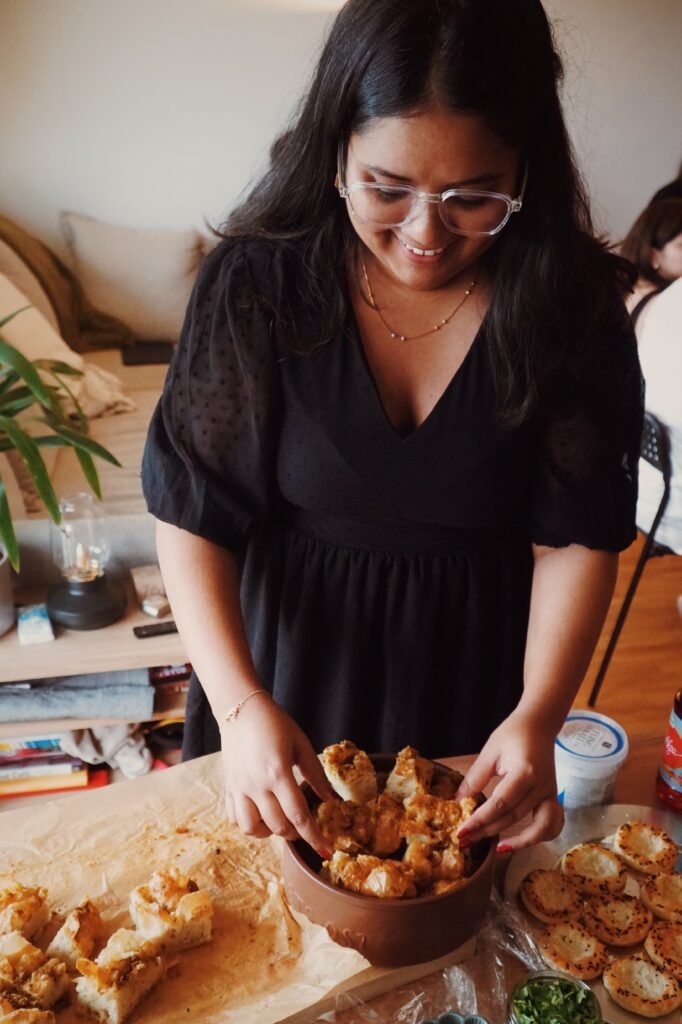

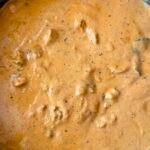
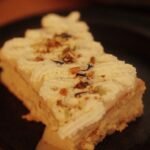


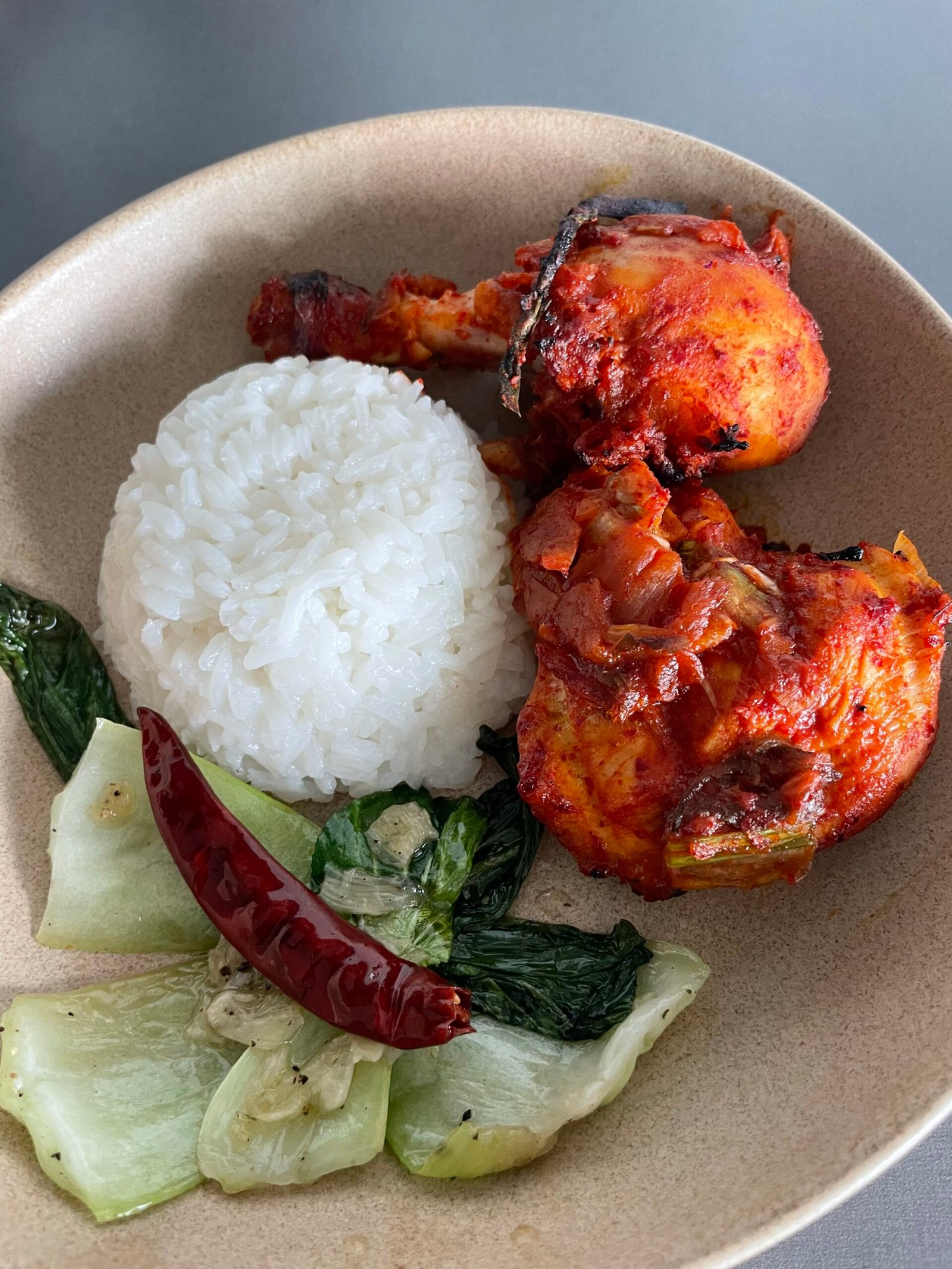
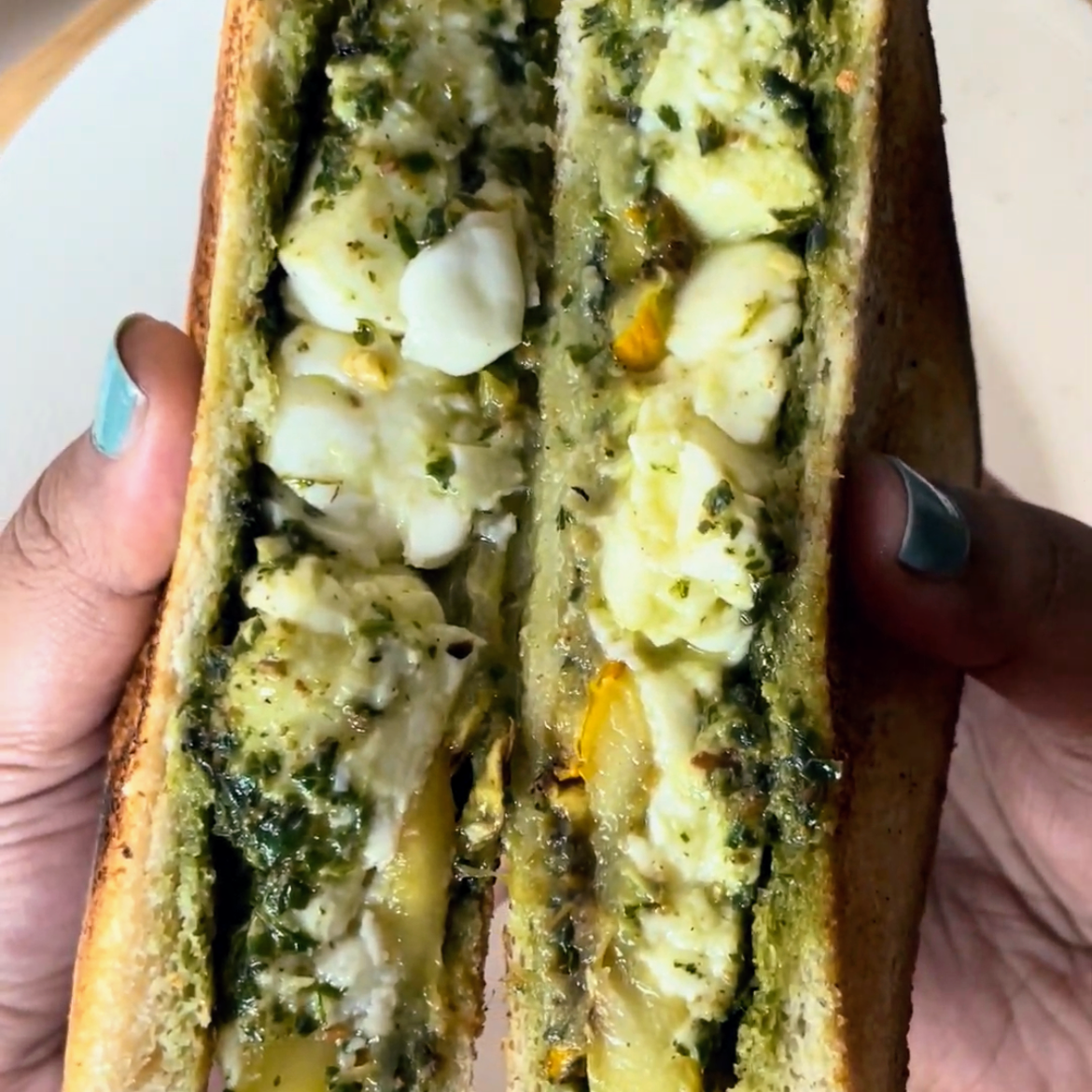
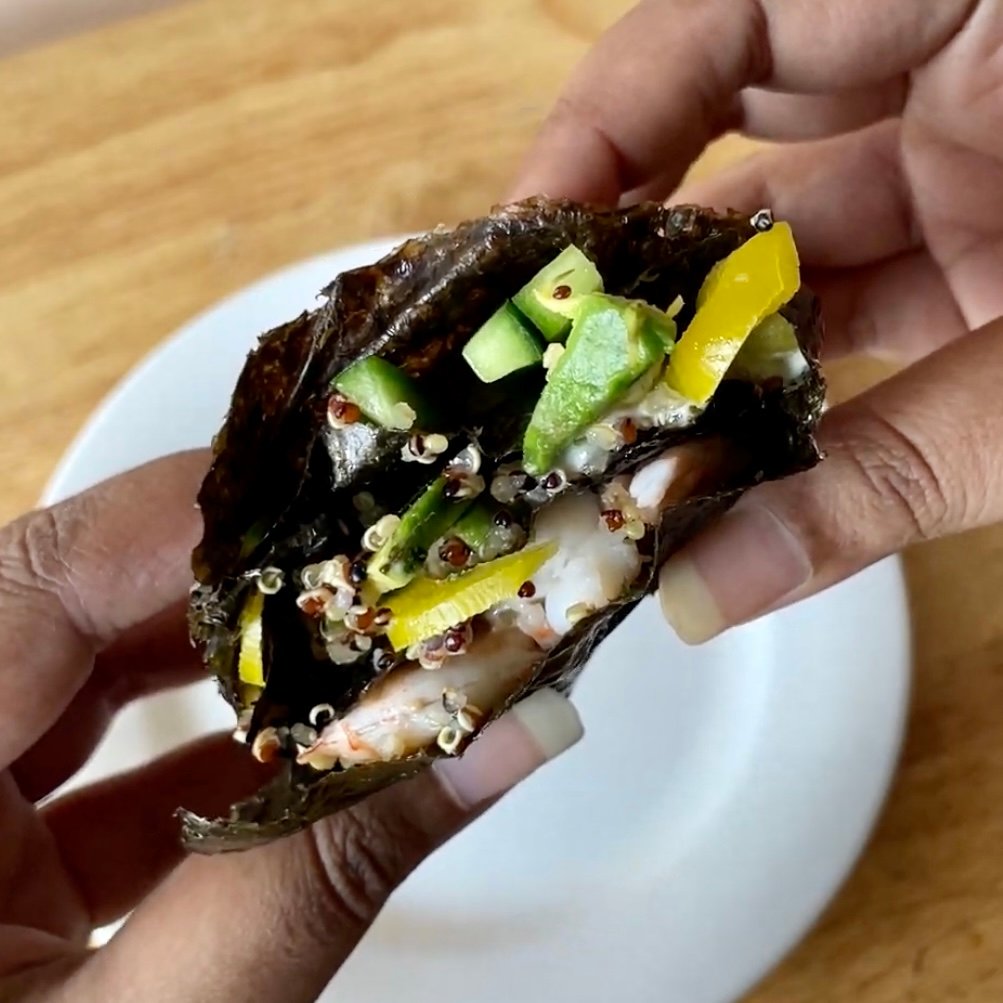
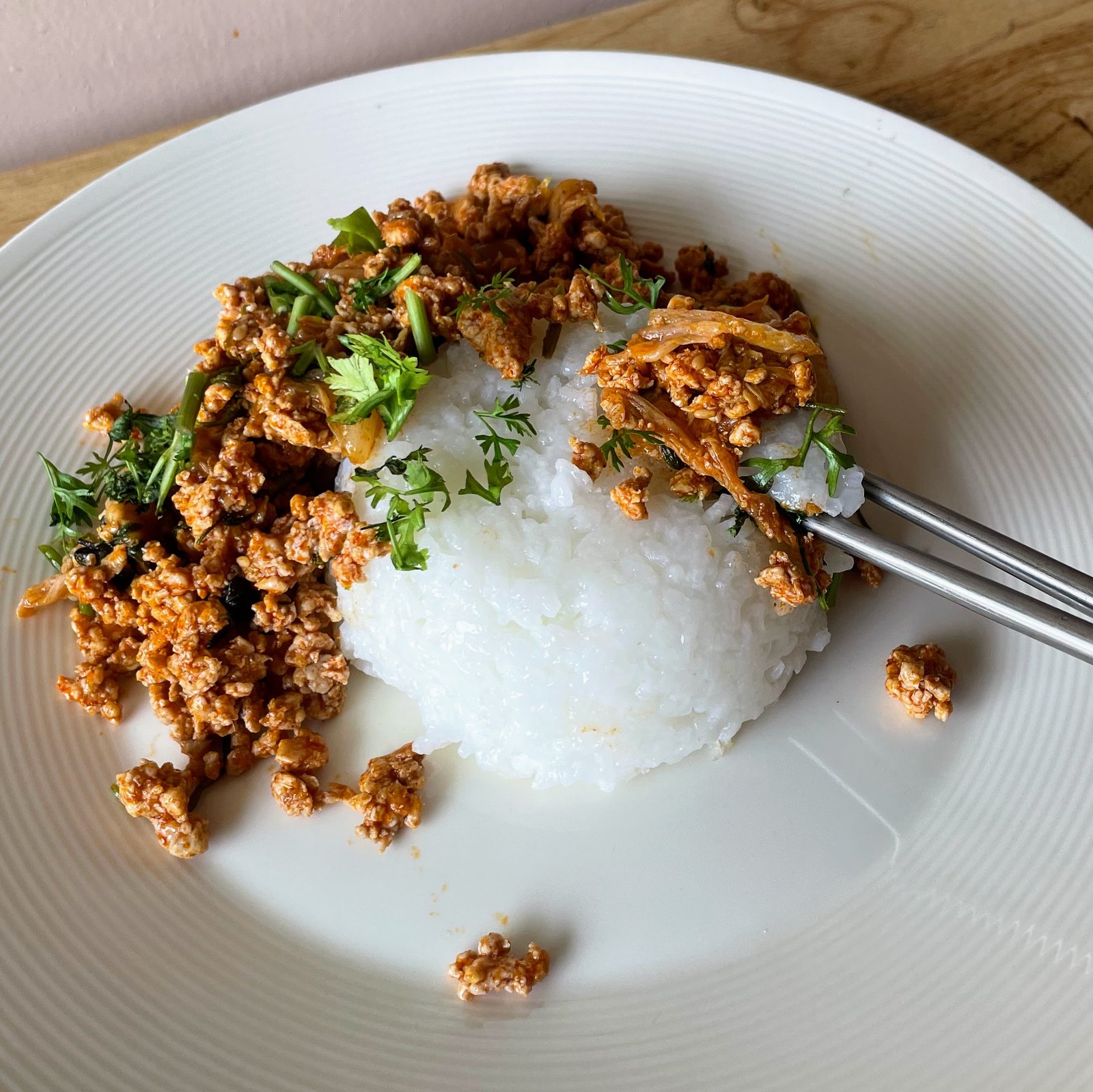
Leave a Reply